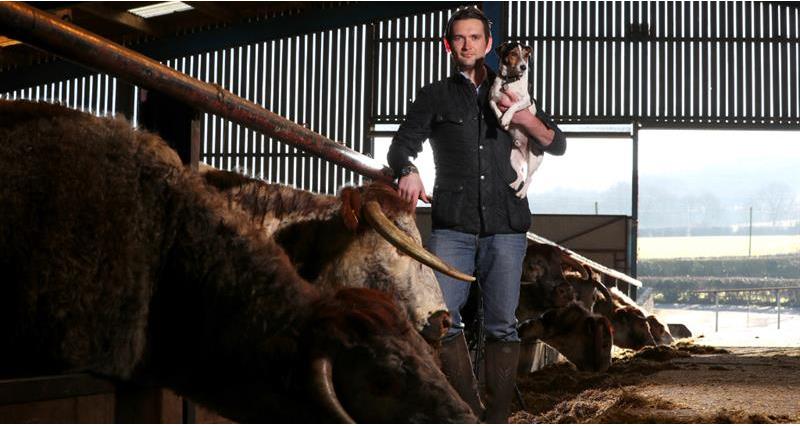From the magazine...
Joe Stanley is a mixed farmer from Leicestershire, farming Longhorn cattle alongside an arable enterprise.
Our diet
I won’t get bogged down in too much detail, but government suggests eating around 70g of red meat (beef, lamb, pork, venison) per day. In short, it’s a major source of protein with high nutrient density; it’s a great source of easily metabolised iron, zinc, potassium, selenium, and vitamins B & D, as well as containing omega-3 fats. All these nutrients are vital for a range of healthy body functions.
Milk is amazing. It provides a smorgasbord of nutrients including calcium, iodine, phosphorous, vitamin B and protein, and does everything from building healthy bones and teeth to supporting the immune system. It’s natural, unprocessed, affordable and tastes great. In short, and as part of a balanced diet, meat and dairy are good for you. Very good.
Right animal, right job
It’s suggested by some that breeding animals to feed people is an inefficient means of producing nutrition. However, if we look at the UK, around 60% of farmland is unsuitable for growing crops such as cereals, fruit or vegetables. Indeed, a quarter of my own farm is only suitable as pasture and this is used for ruminant livestock production – that is, animals with multiple stomachs (cattle, sheep) capable of digesting and utilising the cellulose in grass. Consequently, 90% of the nutritional needs of beef cattle and sheep in the UK are met from grass and silage.
In addition, the UN’s Food & Agriculture Organisation (FAO) recently determined that 86% of livestock feed globally isn’t fit for human consumption; whether that be grass, crop residues such as straw, or by-products from the human food chain such as molasses. We can thus say that nutrition derived from livestock is in fact a very efficient means of farming, using resources mostly unfit to produce anything else. What’s more, the level of efficiency delivered by UK farmers is among the highest in the world, with greenhouse gas emissions (GHGs), land use and water consumption per kg of beef produced a fraction of those elsewhere in the world. The temperate British climate and landscape is perfectly suited to producing high quality meat and milk.
That grazing landscape is also a great tool in the fight against climate change. Although cattle are emitters of GHGs in the form of short-lived organic methane, the permanent pastures on which they graze absorb carbon from the atmosphere (much from the burning of fossil fuels) and store it in the ground: 10 million hectares of UK grassland store approximately 600 million tonnes of carbon, and absorb another 2.4 million tonnes annually – all while supporting livestock production.
Rich heritage
The UK has a proud tradition of livestock breeding stretching back centuries, and is the locus of many of the world’s iconic breeds – Hereford, Angus and Longhorn cattle; the Border Leicester, Suffolk and Cotswold sheep to name only six of many. The history of the British landscape has, in large part, been shaped by our close interrelationship with our ruminant companions.
Our high, broad field hedges and long, winding drystone walls; the stark beauty of the grazing uplands and patchwork of the mixed lowlands; all exist and flourish as a result of livestock farming.
Remove the livestock, and our land would soon begin to look much changed. The innumerable county shows, too, where farmers have for generations proudly paraded their animal charges, would soon cease to exist in the absence of livestock.
Livestock farming is a cornerstone of civilisation. It provides 18% of world calorific intake and 34% of edible protein, while 1bn households rely on livestock for their livelihoods, according to the FAO. In the UK, our livestock are proudly reared in harmony with our landscape to the highest levels of welfare in order to provide our consumers with safe, affordable and high quality sources of delicious protein and nutrient rich food and drink.
If we’re going to muck about with month names, Februdairy and Meaty March have a much better ring to them, if you ask me.
